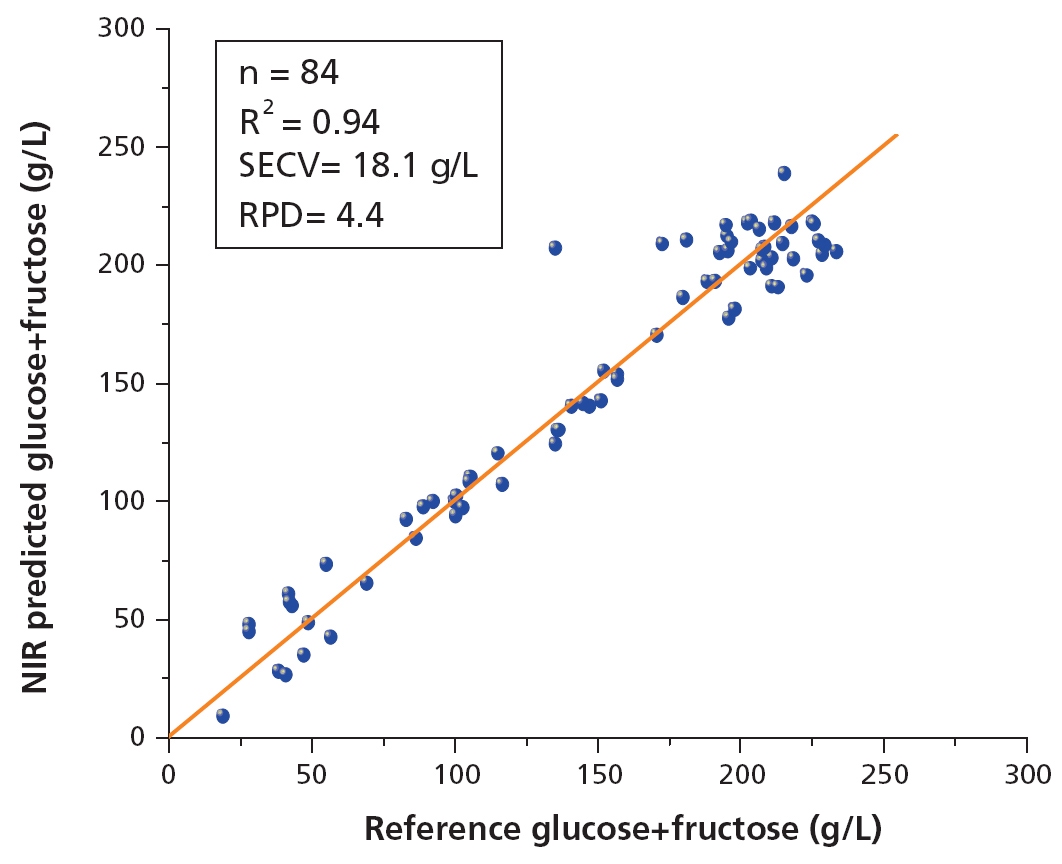A practical solution to expanding grape vine and wine properties analysis opportunities.
The value of NIR for viticulture:
- Spectroscopic techniques such as near infrared (NIR) can be used as a physiological indicator for irrigation scheduling based on vine water demand, rather than relying on weather and/or soil moisture measurements, which do not consider the plant in the assessment
- NIR can be used to analyze chlorophyll in grape wine leaves, sugar content, nutrients and carbohydrates
- The use of NIR has been reported as a tool to measure physical properties such as firmness, elasticity, and touch resistance in batches of Cabernet Franc grapes (LeMoigne et al., 2008)
- The method based on NIR spectroscopy has been used to discriminate ripening, parcel effects, predict ripening stages, and parcel type (LeMoigne et al., 2008)
- Investigations of whole grape berry presentation using a NIR spectroscopic device indicated that NIR may have potential for use at the weighbridge or for in-field analysis of total anthocyanins (color), TSS and pH (Cozzolino et al., 2004)
- Studies have revealed the potential of NIR spectroscopy to predict the concentration of and monitor the extraction and evolution of phenolic compounds during red wine fermentation (Cozzolino et al., 2006)
Use of Chemometrics (multivariate analysis) to make predictions about Viticulture properties:
- Quantitative modeling of data (Indico® Pro Spectral Acquisition Software included and configured to work with ASD’s LabSpec and FieldSpec; GRAMS apps)
- Use regression analysis to correlate various laboratory methods to NIR reflectance
- Build predictors for multiple constituents, for example: Sugar/Brix; Chlorophyll; Carbohydrates; Grapevine water potential (for irrigation scheduling, etc.)
- Make multiple predictions with one measurement

Figure 1. Reproduced with permission from The Australian Wine Research Institute. The relationship between reference and NR predicted values for pH. n=number of samples, R2=coefficient of determination in calibration, SECV=standard error in cross validation, RPD=SD/SECV, values greater than three are considered as acceptable for analytical purposes. (Cozzolino et al., 2004)
The solution
ASD optical spectrometry instruments have the added value of being portable and with optimal signal-to-noise design for faster measurements, and wide spectral coverage of 350-2500 nm for a variety of chemical and properties detection possibilities. ASD offers different instrument configurations and many accessory options for a variety of set-up and sampling approaches for the most convenient and productive measurement scenarios.
ASD instruments are a practical solution to expanding grape vine and wine properties analysis opportunities:
- LabSpec 4 offers laboratory-grade performance in a ruggedized, portable design suitable for benchtop analysis or transport to the sample location. Used for quantitative applications.
- FieldSpec 4 full-range spectroradiometers designed specifically around the challenges researchers face when collecting spectral measurements in the field. Used for scan collection of plant canopies.
Ideal for Viticulture applications:
- Portable solution
- Non-invasive and Non-destructive
- Simple, rapid and cost effective real-time measurement (data and analysis in the field)
- Little to no sample preparation
- Use to ground truth hyperspectral imaging data.
References
Cozzolino, D.; Dillon, S.; Bartowsky E.; Henschke, P.; Cynkar, W.; Janik, L.; Dambergs, B.; Gishen, M. (2004). Monitoring fermentation of red wine using near infrared spectroscopy. Poster session presented to The Australian Wine Research Institute, Urrbrae (Adelaide) SA. Copyright by The Australian Wine Research Institute. Reprinted with permission from The Australian Wine Research Institute as per email.
Cozzolino, D.; Esler, M.; Dambergs, R.G.; Cynkar, W.U.; Boehm, D.; Francis, I.L.; Gishen, M. (2004). Prediction of colour and pH using a diode array spectrophotometer (400 - 1100nm). Journal of Near Infrared Spectroscopy, 12, 105 - 111.
Cozzolino, D.; Parker, M.; Dambergs, R.G.; Herderich, M.; Gishen, M. (2006). Chemometrics and visible - near infrared spectroscopic monitoring of red wine fermentation in a pilot scale. Biotechnology and Bioengineering, 95, 1101-1107.
Le Moigne, M.; Maury, C.; Bertrand, D.; Jourjon F. (2008). Sensory and instrumental characterization of Cabernet Franc grapes according to ripening stages and growing location. Food Quality and Preference, 19(2), 220-231.
